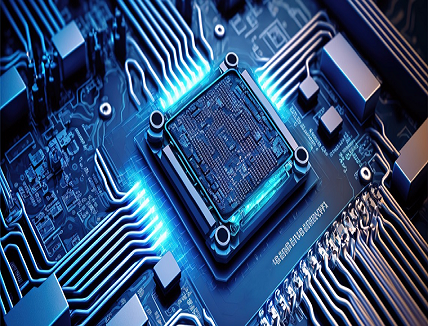
The 2023 STM32 Summit, which will take place from May 12 to 13 in Shenzhen, China, will be an opportunity to connect with our community and shine a light on the innovations coming from this region. The keynotes, hands-on sessions, and demos are a testament to the place the Chinese market occupies globally and the impact Chinese engineers have in our industry. It’s the reason why the plenary sessions will all have English and Mandarin audio tracks, as the STM32 Summit continues to speak to a broader audience.
While ST will take advantage of the 2023 STM32 Summit to launch new series of products and highlight new solutions, we wanted to delve into some of the showstoppers that will grace this event. Keynotes are undoubtedly important, and besides the plenary session, there will be four sub-tracks (Smart Industrial & High-Performance MCU/MPU, Connectivity, Ecosystem & Developer First, and Edge AI & Security). Our readers will be familiar with recent announcements relating to these categories, such as the launch of the STM32MP13, the Chinese version of the Developer Zone, and more. However, it’s critical also to spend time on demos because they present a practical application to those innovations, thus providing attendees with something concrete.
Demo 1: A washing machine with machine learning
How to do edge AI?
For the first time in Asia, ST will be showcasing the washing machine demo running on a machine-learning algorithm. One of the highlights of Embedded World 2023, it uses current sensing and a library generated by NanoEdge AI to determine the weight of the load with an accuracy of ±100 grams. Comparatively, similar systems have an error rate of about ±500 grams. Thanks to greater precision, the machine can tailor the motor’s operation responsible for the wash cycle to optimize energy efficiency. The washing machine also reduces water consumption since it can tailor how much water it draws based on the load data.
Why do edge AI?
The demo is also highly symbolic because it answers a critical question, “why use edge AI in consumer products?” Too often, engineers feel that machine learning is a solution in search of a problem. The ST washing machine demo answers this question by showing that creating a vastly more efficient and environmentally friendly product is possible without adding a single new component. Because NanoEdge AI uses the current-sensing element already available and can run on a mixed-signal MCU like the STM32G4, makers can train and deploy new features thanks to machine learning without having to tweak their PCB and modify their bill of materials.
Demo 2: Industry 4.0 in action
How to build Industry 4.0 applications
The 2023 STM32 Summit will also be an opportunity to see how the entire ST ecosystem can work together to bolster Industry 4.0 and prepare for Industry 5.0. Hence, despite its name, the 2023 STM32 Summit is far more extensive than the STM32 family of devices. One of the best examples will be the robot arm demo that simulates an actual factory automation application that moves objects from one side to another. While the task may appear simple, it demands a tremendously high level of interconnectivity and intelligence to improve all operations.
For instance, an application running on an STM32G0 uses a time-of-flight sensor (VL53L3CX) to detect whether someone or something is near the machines. If there is, the system sends a message to the programmable logic controller, powered by an STM32MP1 and IO-Link connectivity (L6364), to stop all activities. It thus ensures the safety of operators that may wander nearby. Industry 5.0 distinguishes itself by offering human-centric technologies. In this demo, we show how the safety and well-being of the people working in factories can take center stage.
How to approach interconnectivity and intelligence?
To demonstrate the interconnectivity of all elements, the presentation uses an IO-Link master box with EtherCAT that houses an STM32L4 and an L6360. In this instance, the master connects to terminals that control the air valve actuators, the two stepper motor drives that run the conveyor belts, and the robot arm. Consequently, it’s possible to monitor and interact with every element of the application through IO-Link interfaces.
Moreover, the showcase uses the STEVAL-PROTEUS, an evaluation kit for industrial AI applications with an STM32WB. The platform enables additional sensors and a connection to a cloud service for condition monitoring thanks to a Bluetooth Low Energy or a Zigbee gateway. As products move along the assembly line, an NFC reader scans the tag on each item and sends the information to a cloud by way of LoRa, thanks to an STM32WL that houses a sub-GHz transceiver.
Demo 3: Securely locking the software inside a smart lock
Why does the community think about ST when it comes to security?
The setup is straightforward, mostly relying on a NUCLEO-WBA52CG development board and its new STM32WBA. The STM32WBA supports diverse protocols apart from BLE, such as Matter, OpenThread, ZigBee, and more. As part of its scalable security strategy, ST ported the Trusted Firmware-M onto the TrustZone architecture of the STM32WBA as part of a SESIP level 3 certification.
In the demo, our experts attached a display to the board to show the lock’s position (opened or closed). In practice, the user interacts with ST’s BLE mobile app to send a signal to the lock. In practice, the application uses the ability of the STM32WBA to support Trusted Firmware-M, protect various keys and certifications, and isolate some of the code in a secure partition. Put simply, while the demo shows a smart lock, behind the scenes, engineers get to see how ST’s solutions enable a robust integration of the latest security features in embedded systems.
Demo 4: Inside a maze with an STM32MP1 to find the way out of motor control applications
How to make motor control with an STM32MP1 sexy?
Listing the hundred demos that will make the 2023 STM32 Summit special is impossible. Hence, we settled on demos like the Maze Game that will help our community understand market trends and point them to solutions that may help them in their work. As the name implies, a maze is placed on top of two motors, and an STM32MP1 that processes images from our B-CAMS-OMV camera module to control the motors and move a ball toward the center of the maze. The microprocessor communicates with the motors using EtherCAT. One Ethernet cable runs from the STM32MP1 board to one STEVAL-ETH001V1, which is daisy-chained to the other.
What do more motor control applications require?
Besides its inherently fun and clever aspects, the Maze Game demo is another example of the importance of communication in motor control applications. Indeed, users can control the demo using a joystick or a Bluetooth device, thanks to an X-NUCLEO-IDB05A1. As a result, attendees can see how important it is to provide a range of control schemes and how they can implement them using ST solutions. Another lesson from Maze Game is the importance of a responsive edge AI. The camera module is connected to an STM32H747I-DISCO, which shows how teams can use an MCU and an MPU to optimize operations to obtain short inference times and make the machine learning application effective.
For more information visit ST Blog Here.














